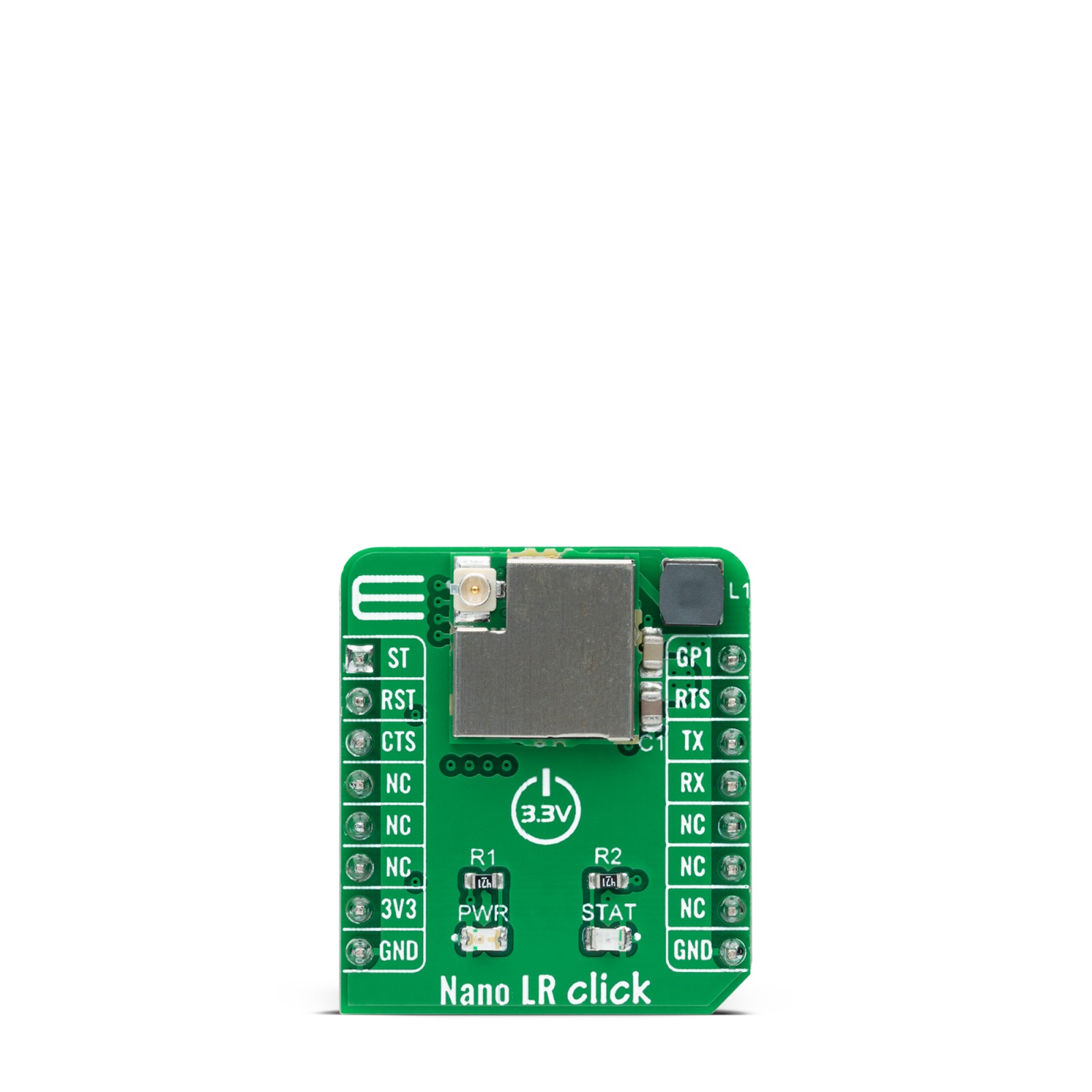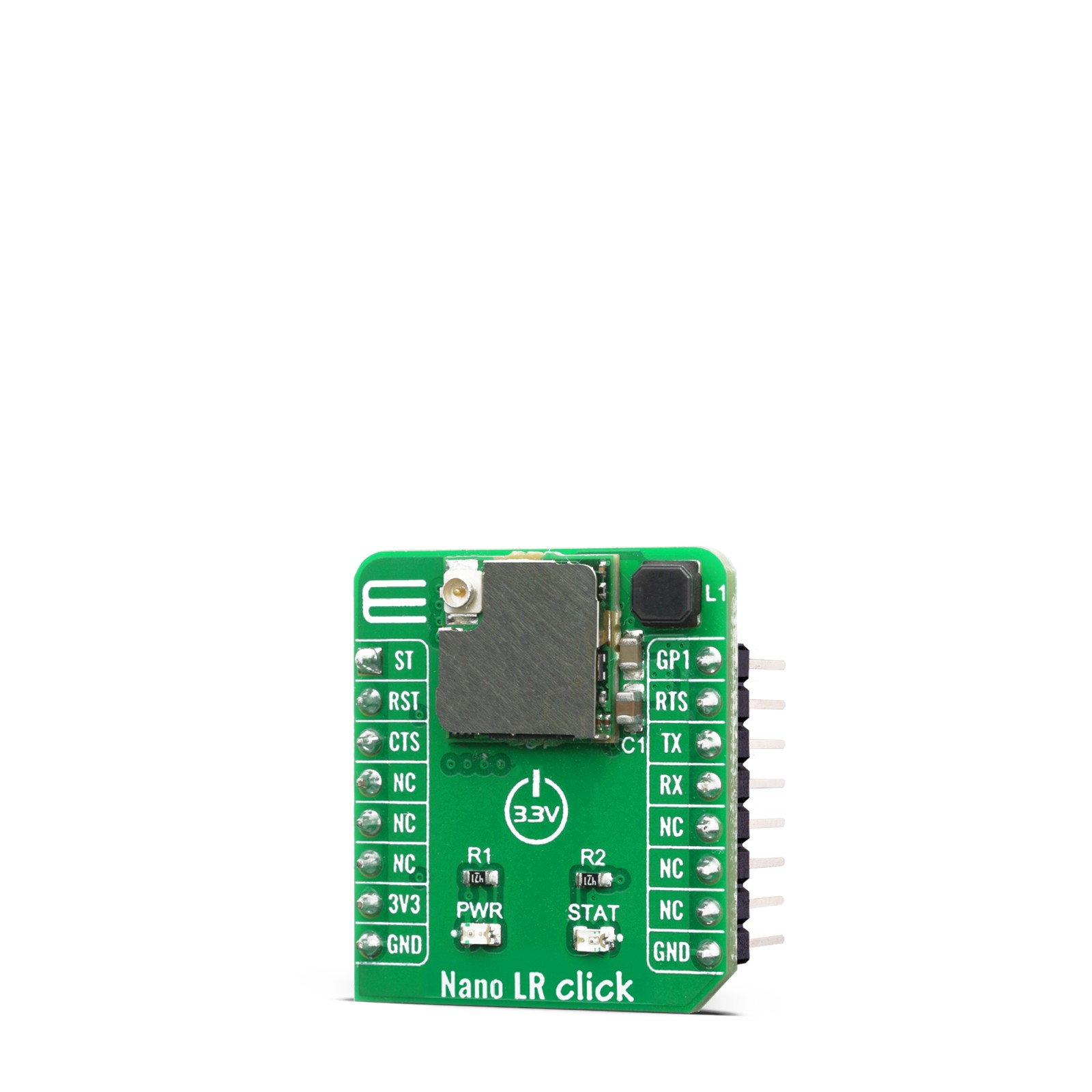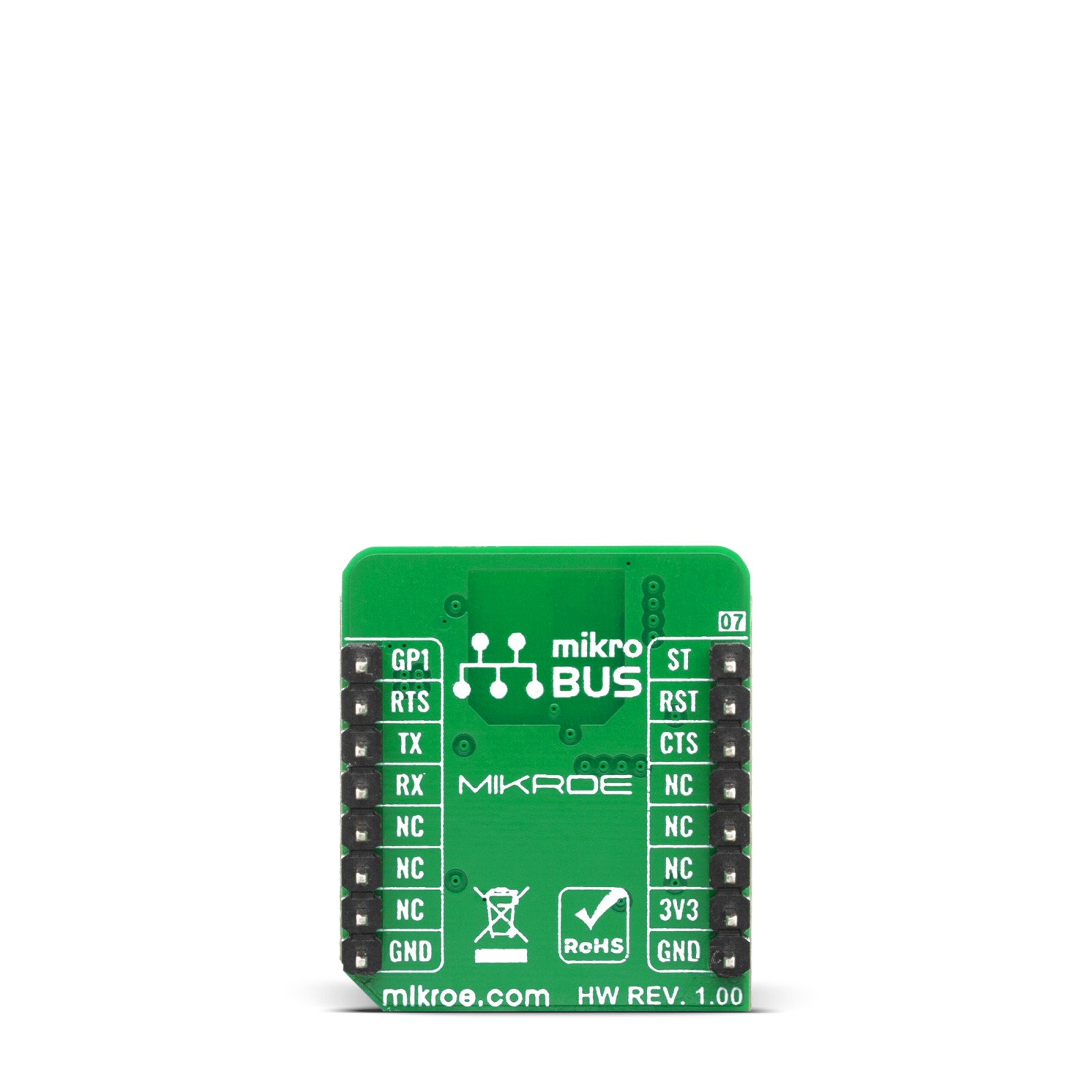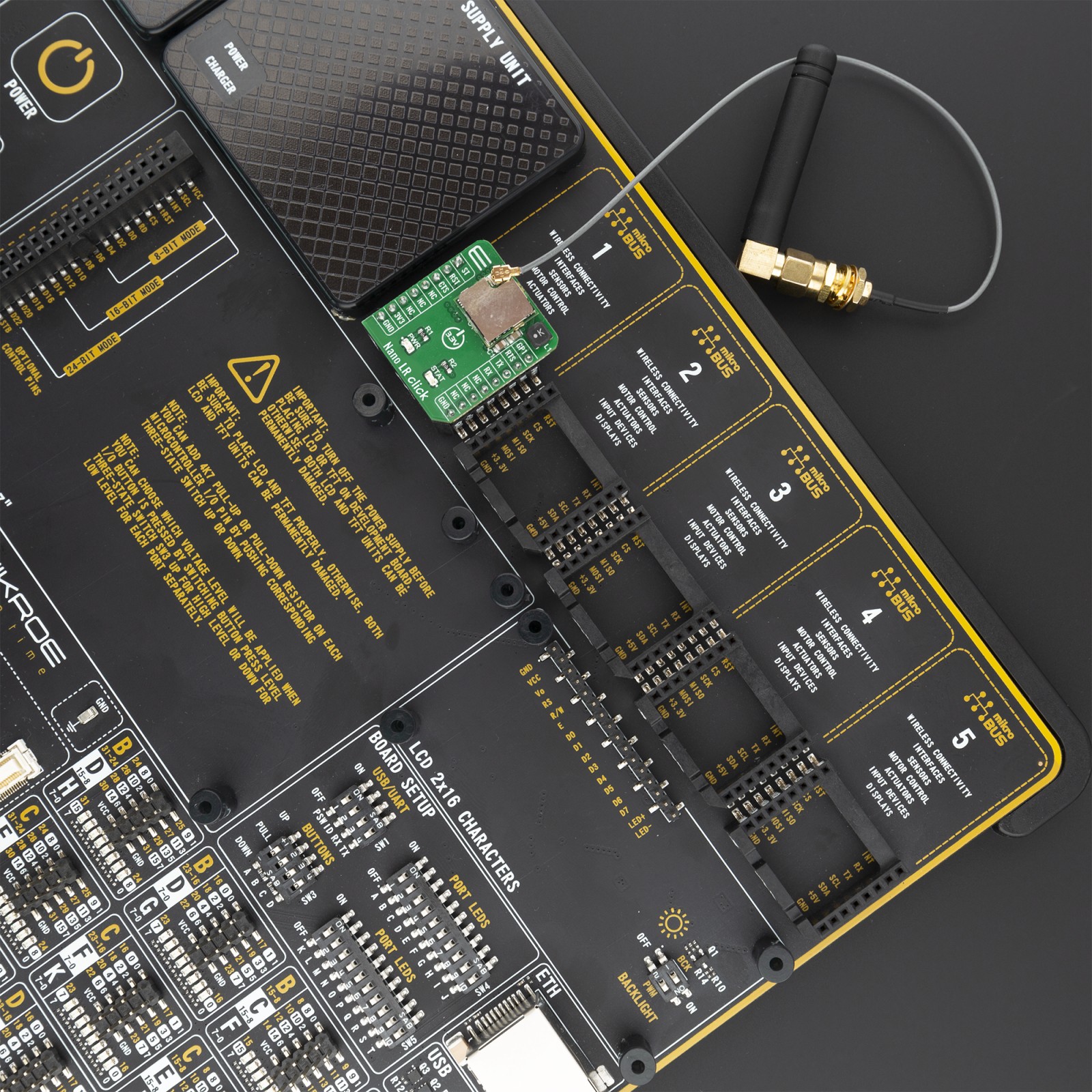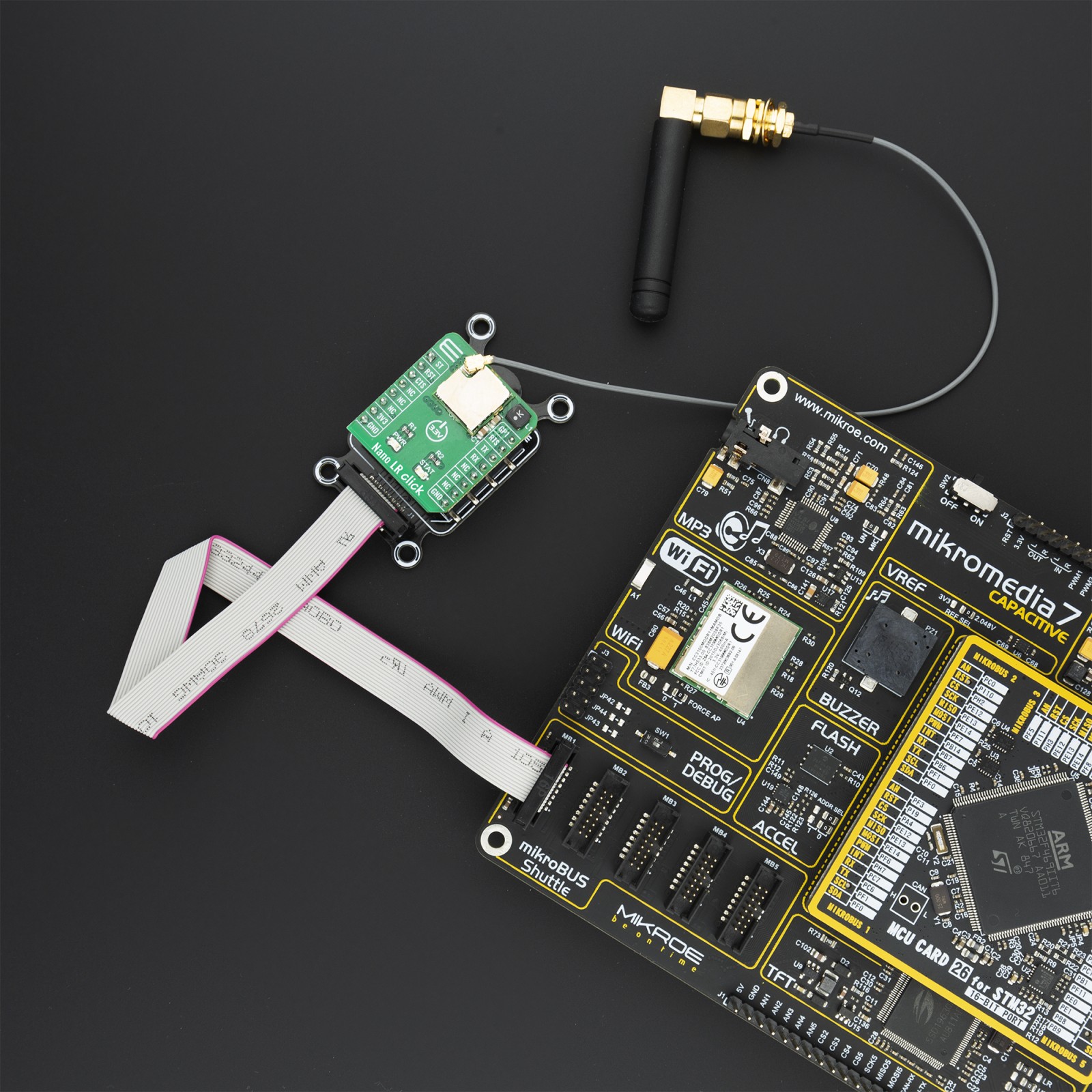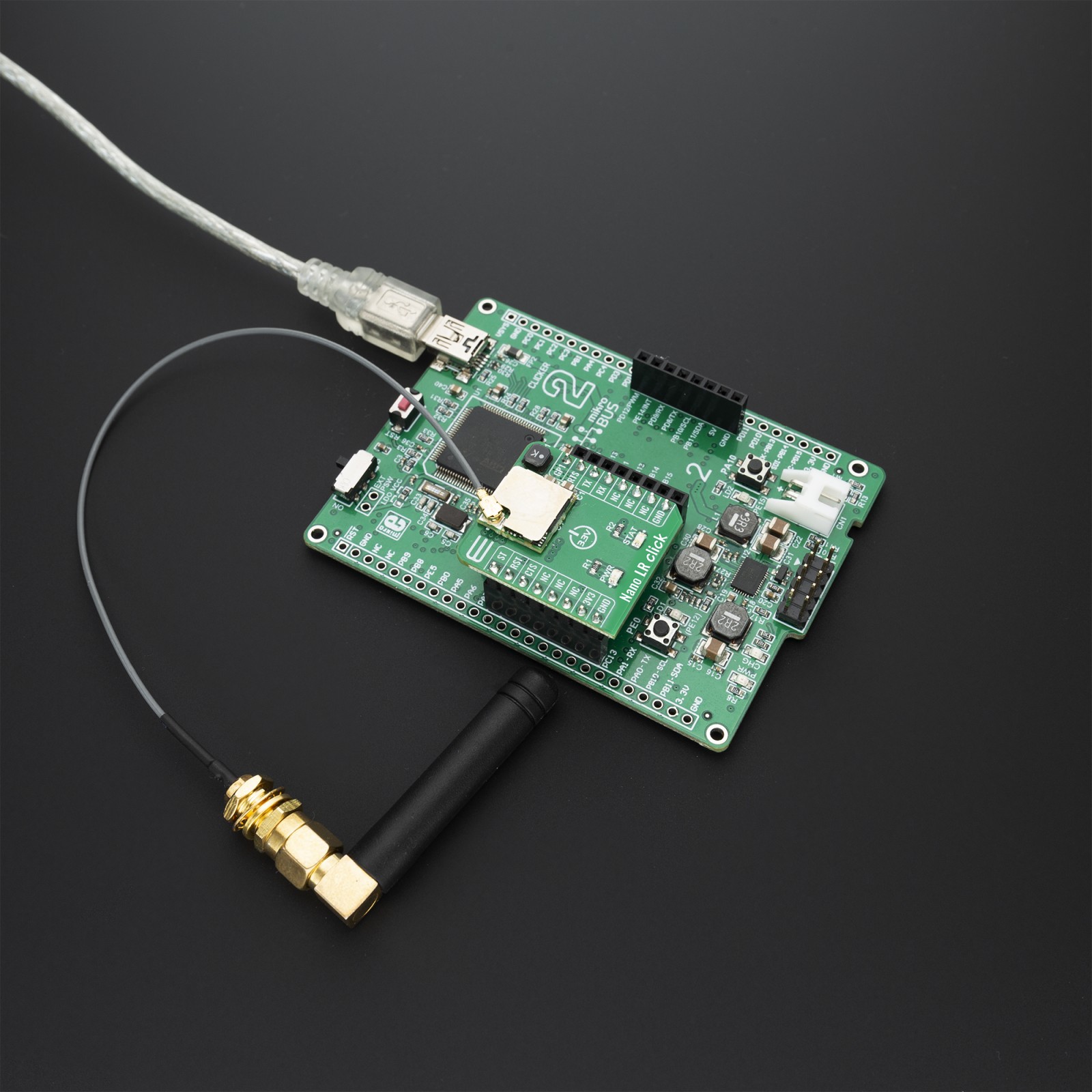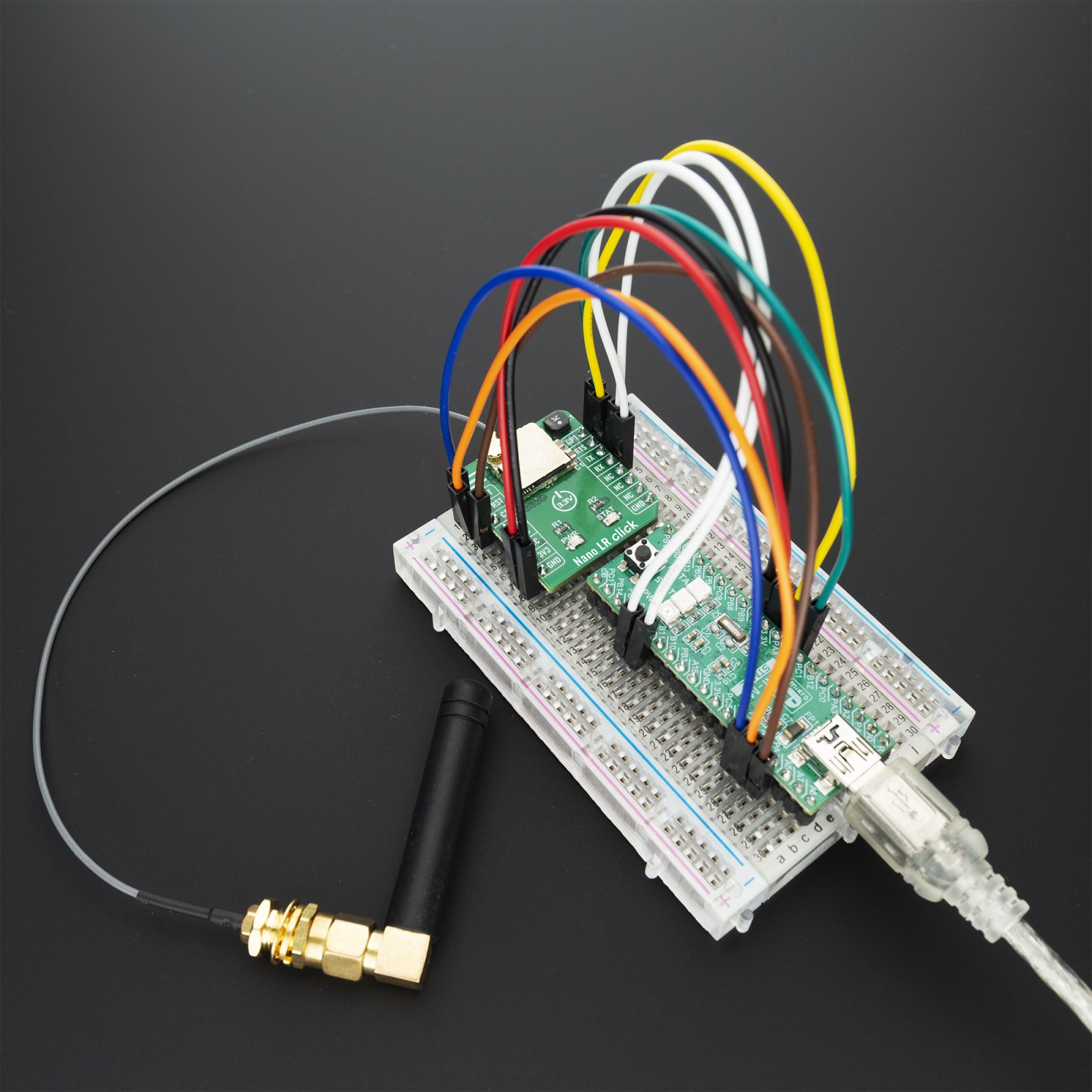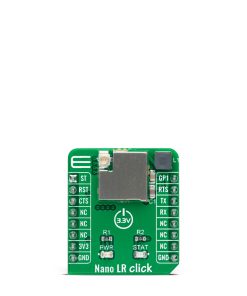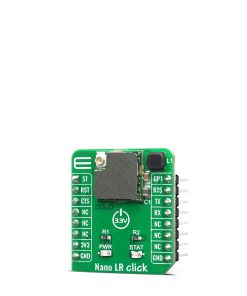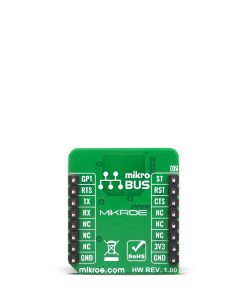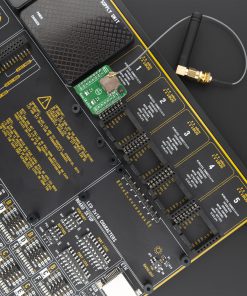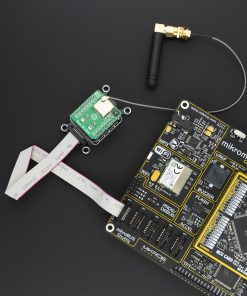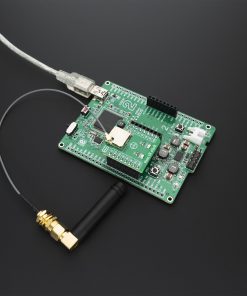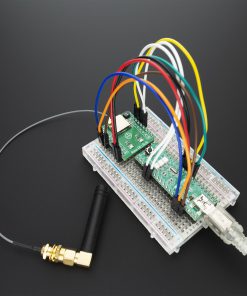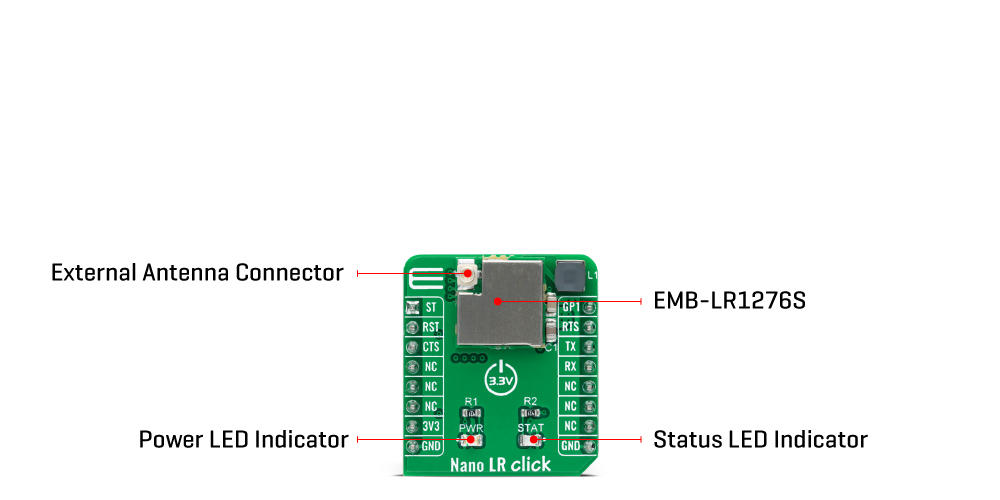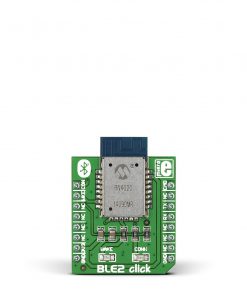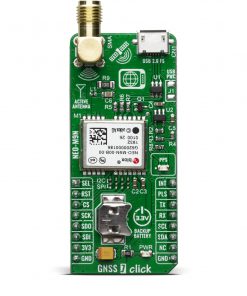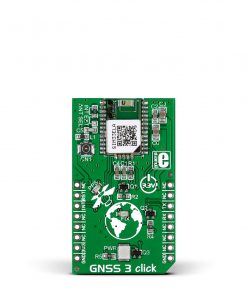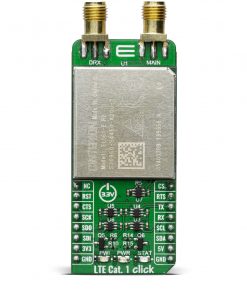Subtotal: R2,470.00
Nano LR Click
R1,200.00 ex. VAT
Nano LR Click is a compact add-on board that contains a long-range transceiver. This board features the EMB-LR1276S, RF technology-based SRD transceiver, which operates at a frequency of 868MHz from Embit. Thanks to the spread spectrum modulation feature, as well as the low power consumption, it is capable of achieving long-range communication, immune to interferences. This Click board™ offers an easy and reliable solution for developing highly integrated long-range IoT networks, security systems, alarm networks, and similar applications that require simple and reliable networking solutions.
Nano LR Click is supported by a mikroSDK compliant library, which includes functions that simplify software development. This Click board™ comes as a fully tested product, ready to be used on a system equipped with the mikroBUS™ socket.
Stock: Lead-time applicable.
| 5+ | R1,140.00 |
| 10+ | R1,080.00 |
| 15+ | R1,020.00 |
| 20+ | R981.60 |

 GSM Click
GSM Click  tRF Click
tRF Click  DIGI POT Click
DIGI POT Click 